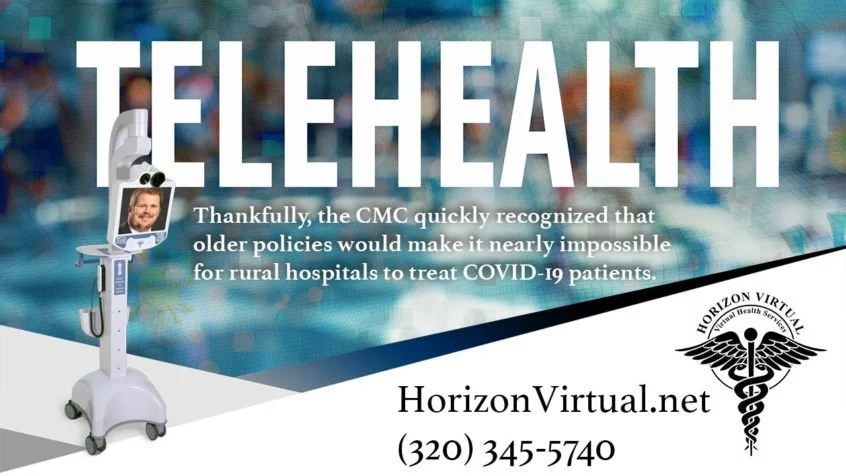The COVID-19 pandemic has fundamentally changed the way the world works and has been a massive strain on all of our lives. While it’s nearly impossible to try and find a silver lining, there are some positives that have come out of the pandemic. One of those positives was the changes made to The Centers for Medicare and Medicaid Services (CMS) telehealth rules. Our team here at Horizon Virtual is here to explain how these changes can help your rural hospital.
Why Were There Changes?
Early on in the pandemic, it became glaringly obvious that smaller, rural hospitals would not have the resources and manpower necessary to fight off the virus. One of the biggest blows to smaller hospitals was the pause placed on elective surgeries. This nearly spelled financial ruin for many hospitals.
Even with elective surgeries put on hold to help with the COVID-19 pandemic, these hospitals were still unprepared to help with the outbreak. This is because these hospitals have no access to infectious disease specialists. CMC telehealth rule changes allowed rural hospitals to gain access to these specialists virtually, helping them in their battle against the COVID-19 pandemic.
CMC Telehealth: How it Worked Before
Before the pandemic broke out, the CMC would only cover the costs of telemedicine under very specific and hard to reach guidelines. For example, in order to receive primary care telemedicine services, patients were required to have an ‘established relationship’ with the physician within the last three years. That rule prevented some telemedicine professionals from stepping in during emergencies and many other medical cases.
Hospital patients could only be seen in certain “originating hospitals” approved by Health and Human Services. Generally, hospitals in designated Metropolitan Statistical Area (MSA) were unable to bill for professional fees on telemedicine visits. And, only patients seen in a hospital located in a Health Professional Shortage Area (HPSA) could be billed to Medicare for professional fees.
CMC Telehealth: How It Works Now
Thankfully, the CMC quickly recognized that these older policies would make it nearly impossible for rural hospitals to treat COVID-19 patients. That’s why they removed the ‘three-year established’ requirement completely. The CMS also guaranteed that there would be no audits of this stipulation.
Strict requirements regarding the ‘originating hospital’ and ‘attending physician’ have also been lifted. For the duration of the COVID-19 Public Health Emergency, Medicare will make payment for telehealth services furnished to beneficiaries in any healthcare facility — including any hospital across the country, which simplified billing. Nonetheless, there has been no change in the billing rules that require the physician to be sitting at a desk within the United State for professional fee reimbursement.
Bed-Side Telehealth Services: We Can Help
If your rural hospital is in need of telehealth services, our team here at Horizon Virtual is here to help. We offer a medical cart that allows an overnight, on-call doctor, called a hospitalist, to login from home and evaluate a patient that is in the hospital. Our services allow your rural hospital to keep more patients. Contact us today to find out how we can help you. What is the difference between traditional telemedicine and bed-side telehealth services? Check out the FAQ section at the bottom of our Platform Overview page.

